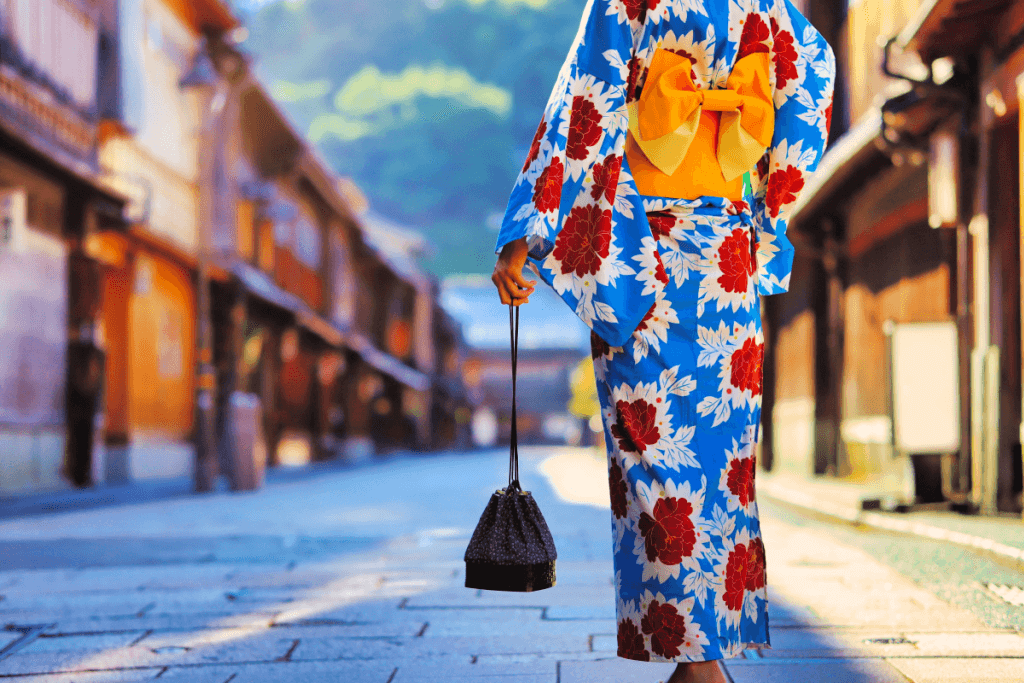Kimono, the traditional Japanese garment, has captivated hearts for centuries. Its allure lies not only in its exquisite design but also in the stories it tells. Every fold, every stitch, and every choice of fabric and color hold a deeper meaning, reflecting elements of nature, seasons, and social status. This wearable canvas showcases special attention to detail, reflecting the skilled craftsmanship of artisans who bring these garments to life.
Table of Contents
ToggleWhat is kimono?
Originally from the Heian period (794-1185 AD), the kimono has evolved but remains an iconic symbol of Japanese fashion and heritage. The term “kimono” literally translates to “thing to wear” in Japanese, reflecting its essential nature as attire.
Initially, the kimono consisted of simple straight-line robes worn by both men and women. However, during the Muromachi period (1336-1573), the kimono underwent significant changes, adopting a more distinct and recognizable form. The garment features a T-shaped silhouette with straight-cut sleeves and a wraparound style, secured by an obi, a wide sash.
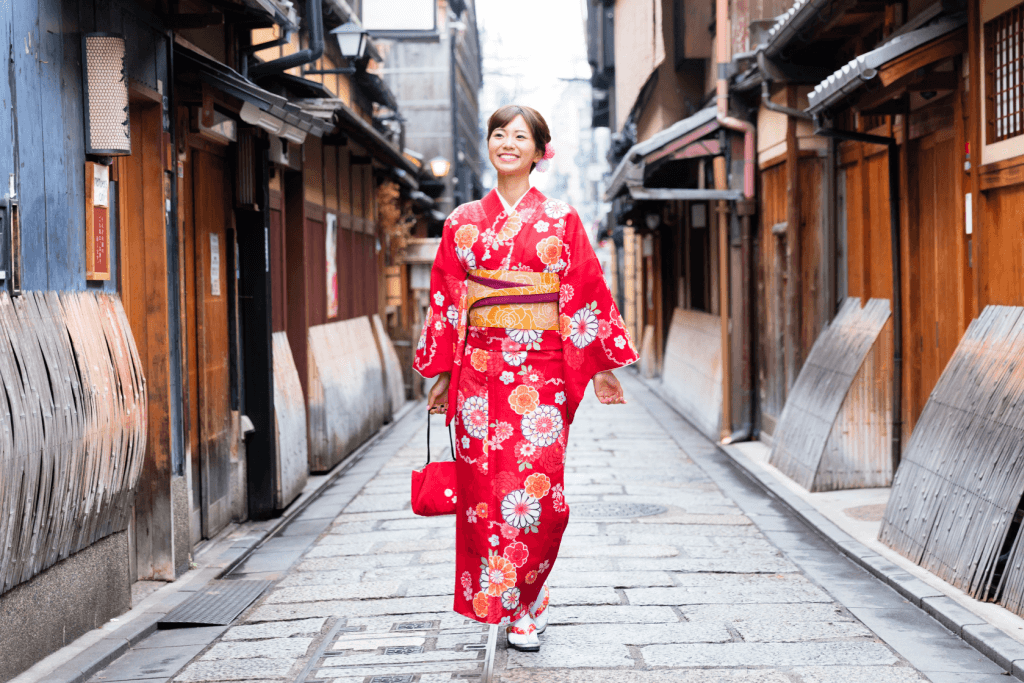
Kimono fabrics are often made from silk, although some artisans also use cotton, even synthetic fibers. The designs and patterns found on the fabric hold symbolic meanings, reflecting elements of nature, seasons, and social status. Traditional kimono can have exquisite decorations with intricate motifs, including floral patterns, geometric shapes, and auspicious symbols.
Today, this garment is suitable for special occasions, such as weddings, tea ceremonies, festivals, and traditional art performances. While it is considered formal attire, variations such as yukata (a lightweight cotton kimono) are worn casually, especially during summer festivals. The kimono’s enduring appeal lies in its elegant, timeless aesthetic and cultural significance, representing Japan’s rich history and artistic traditions.
What’s the difference between men’s and women’s kimono?
Men’s kimono typically have a more straightforward design and are more subdued than women’s. They often feature solid colors or small, repetitive patterns. The sleeves of men’s kimono are narrower and shorter, offering a more streamlined and practical look. The obi worn with the men’s version is narrower and tied in a simple knot at the back.
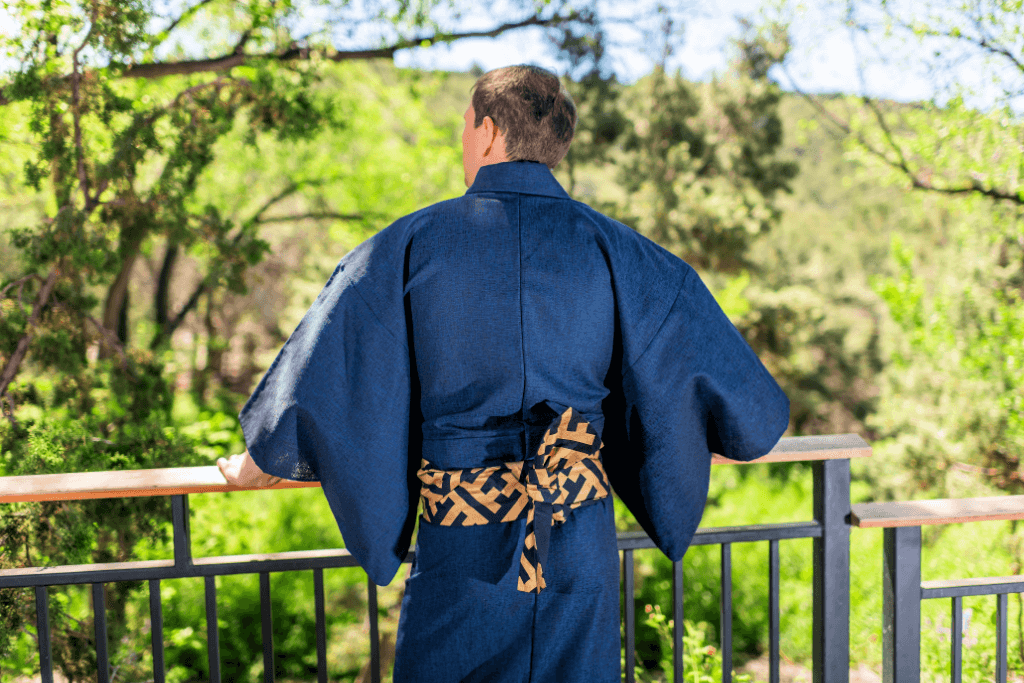
On the other hand, women’s kimono is more elaborate and vibrant. Some patterns include bold florals, intricate landscapes, and graceful motifs. Women’s kimono have broader and longer sleeves, allowing for more elegant movements and showcasing the decorative aspects of the garment. The obi worn with women’s kimono is wider and tied in an elaborate bow at the back.
Another notable difference is in the collar. Men’s kimono has a straight, narrow collar, while women’s has a more comprehensive, rounded collar that frames the face and neck. These distinctions reflect the traditional gender roles and societal expectations of modesty. However, it is essential to note that there is more flexibility in kimono fashion in modern times, and individuals may choose to wear styles that deviate from traditional gender norms, embracing personal expression and creativity.
Are you interested in experiencing even more of traditional Japan? Check out Sakuraco! Sakuraco delivers traditional Japanese snacks, sweets, tableware, and more from local Japanese makers right to your door, perfect for a pleasant snack time at home!

Why are kimonos so detailed?
One reason for the elaborate detailing is to convey symbolic meanings. The designs and motifs found on kimonos often represent elements of nature, seasons, mythical creatures, or auspicious symbols. For example, cherry blossoms may symbolize beauty and transience, while cranes represent longevity and good fortune. By incorporating these symbols into the fabric, the kimono becomes a visual storytelling medium, expressing deeper cultural and personal narratives.
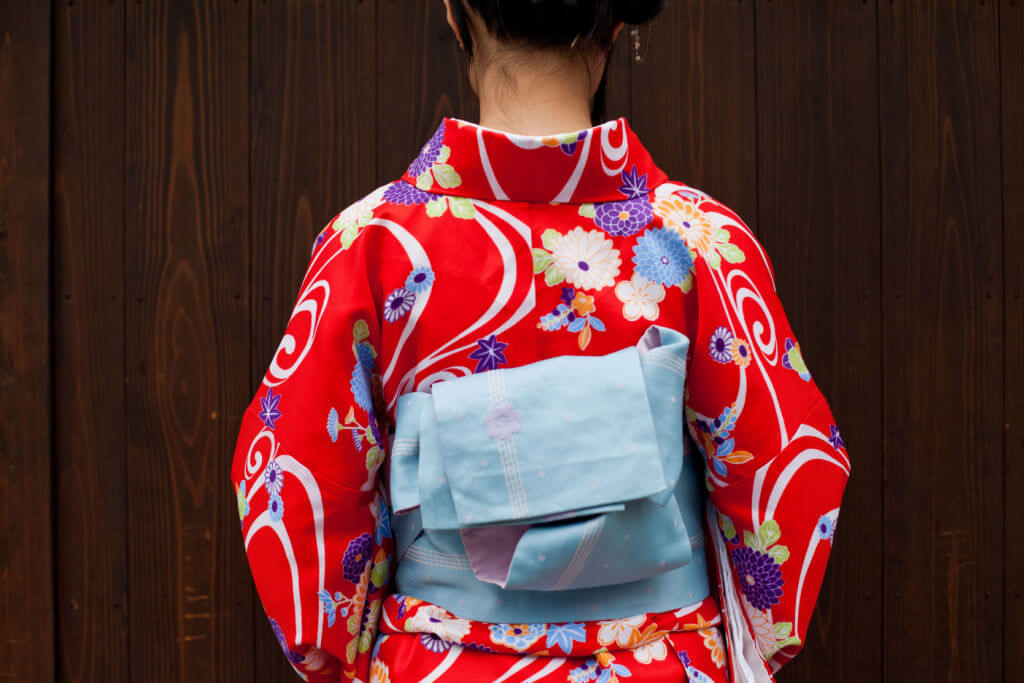
Furthermore, the intricate detailing showcases the craftsmanship and skills of the artisans. Traditional dyeing techniques, such as yuzen and shibori, and intricate embroidery methods are employed to bring the designs to life. These techniques require patience, precision, and expertise, resulting in breathtakingly detailed patterns and textures.
Additionally, kimonos are often worn on special occasions, where their ornate details contribute to a sense of elegance and formality. The intricate motifs and rich colors add a touch of sophistication and enhance the overall aesthetic appeal, making the wearer stand out and exuding a sense of grace and beauty.
In essence, the exact nature of kimonos reflects a harmonious blend of artistry, symbolism, cultural heritage, and the desire to create garments that are not only visually stunning but also convey profound meanings and emotions.
What colors do kimono come in?
Kimono garments come in various colors, each with significance and cultural symbolism. They vary depending on the occasion and season. White, symbolizing purity and simplicity, is often worn during significant life events like weddings or as a sign of mourning. Red, a vibrant and optimistic color, represents celebration and vitality, frequently seen during festivals. Black exudes formality and elegance, typically worn on formal occasions.
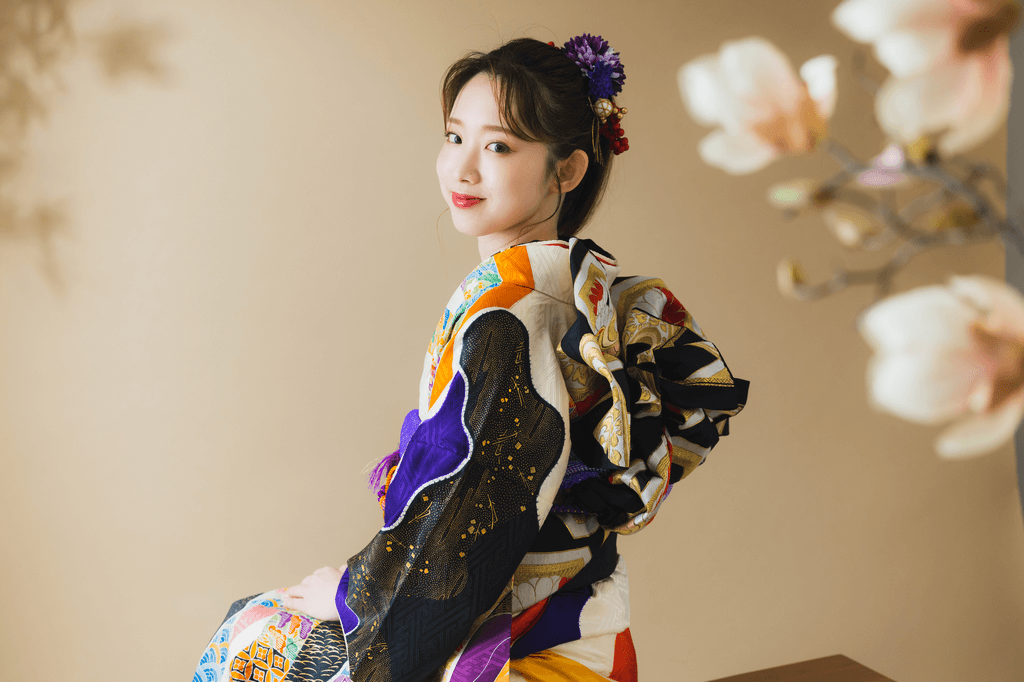
Blue represents tranquility and the natural world, while pink signifies femininity and youthfulness, commonly associated with cherry blossoms in spring. Gold and silver metallic colors denote luxury and prestige, often used in celebratory or ceremonial kimono. Green represents nature and freshness, inspired by landscapes and forests. These carefully chosen colors, blended harmoniously or used individually, create captivating compositions, reflecting personal taste, cultural context, and desired aesthetic impact.
Overall, the kimono captures the essence of Japan’s rich cultural tapestry. You can experience the elegance and grace permeating Japanese fashion through the kimono. Its intricate details and vibrant colors create a visual feast for the eyes, captivating both the wearer and the observer. What do you find most intriguing about the kimono? Have you had the opportunity to witness its beauty firsthand or explore its symbolism? Let us know in the comments below.


